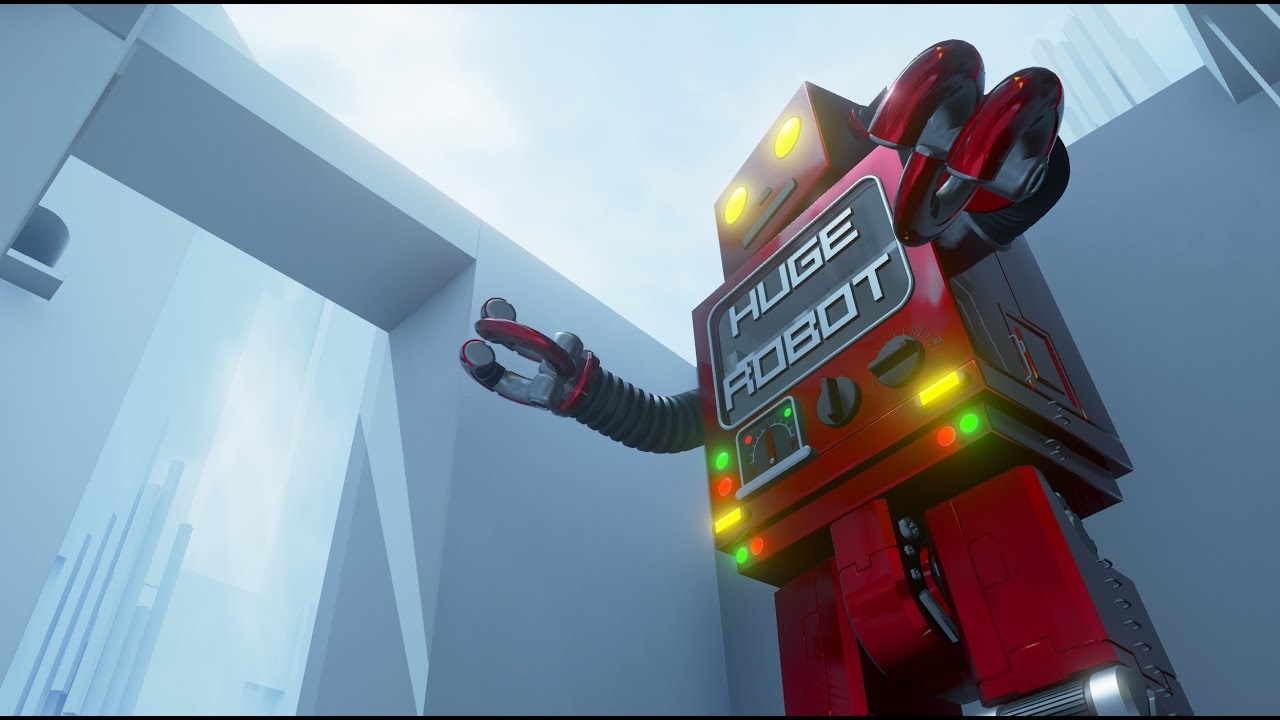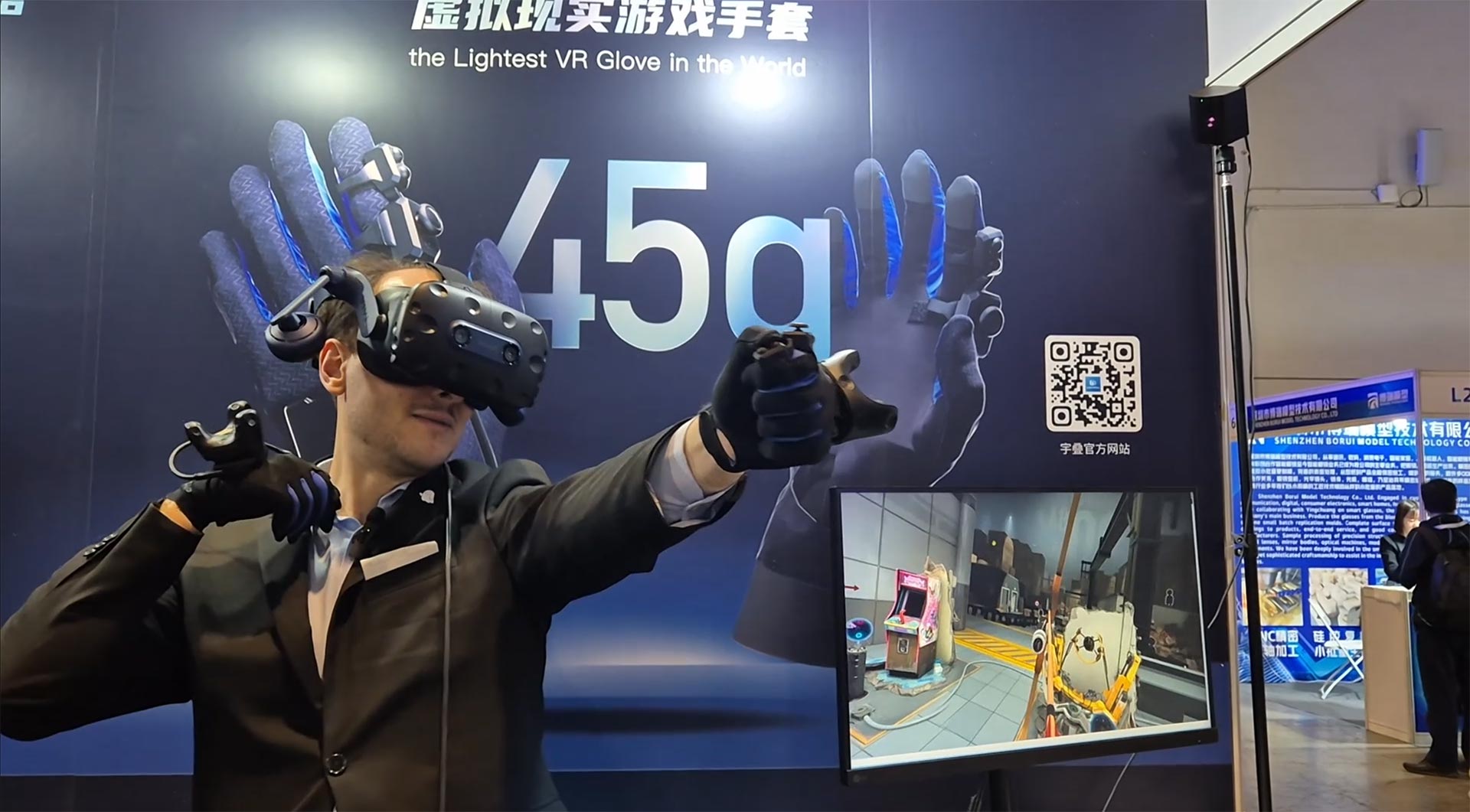Freedom Locomotion System Review
I finally had the chance to try the super-praised Freedom Locomotion System by ZapTruder (or Huge Robot, as you prefer). Freedom Locomotion System is this new locomotion method invented by this Japanese guy, that works this way:
- You stand in the VR experience (so, you’re not seated);
- You use the VR controller that you hold in your hand to decide the direction you want to go. You do not decide this by pointing the controller, but by pointing simply a thumbstick on the controller with your thumb;
- You walk in place to walk in virtual reality towards the direction that you specified at the previous point. The faster you walk-in-place, the faster you move in virtual reality.
The method has been depicted as super-innovative, because:
- It uses a natural way of locomotion (walking-in-place). This is cool because it is not only natural, it is also nausea-free, since the fact that you somewhat move in the real world while you move in the virtual world makes the vestibular system happy and you have no motion sickness. That’s why this is the locomotion method that we chose for our ImmotionRoom system;
- To detect direction movement it doesn’t use head direction. One of the most annoying thing in VR is moving with direction decided by head: I tried it lots of time with DK2 demos and it is terrible. You start looking around because you’re astonished by the environment and so you start also walking in all directions: that’s wrong on so many levels. I want to walk in one direction and be able to look wherever I want (in ImmotionRoom we use direction of the chest, but Oculus and Vive do not have full body tracking, so can’t obtain this info);
- To detect direction movement/speed it doesn’t use the whole controllers, just a thumbstick. Some locomotion demos require you to swing your arms or to do something like that to warlk in VR. But this means that if you want to run and shoot bullets at the same time, you have to do some insane movement where you swing your arm but in the meanwhile you should have your arms fixed to fire appropriately. So bad.
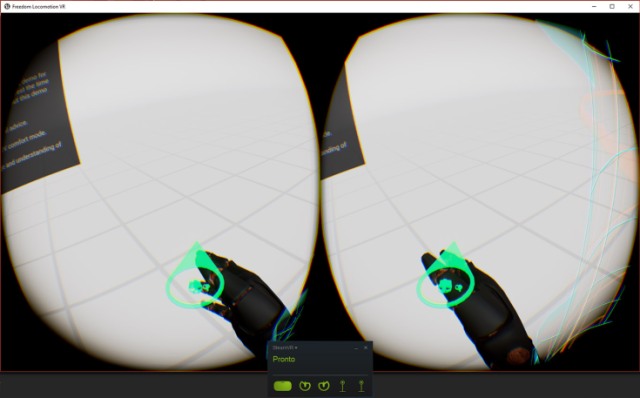
In the beginning Freedom Locomotion demo was usable only using HTC Vive, but now the author has put the demo on Steam and it is compatible with Oculus, too… so I’ve been able to try it with my Oculus+Touch setup.
The demo begins with a calibration step, where you’re asked to define your height, Chaperone/Guardian area size and then you have to walk, jog and run so that the system defines some internal thresholds for walking-detection. Calibration is boring, but it lasts only few minutes. Then you find yourself inside a huge playground with a Huge Robot and other funny stuff.
My feedback on this walking method is surely positive. It requires a little practice, but it works and it has really simple mechanics. The fact that it is enabled for both hands makes it usable for left-handed as well as right-handed people. Walking detection is well-made: it detects very well if I’m walking, running or standing still. It’s also quite sensible, so it didn’t require me to fully raise my leg: just a little wobbling was necessary to trigger the virtual locomotion, so it is less tiresome. Walking-in-place reduces motion sickness, but the author dediced to also reduce FOV while the player is walking and this reduces sickness even more, so this is a very comfortable mechanic. There’s also a method to rotate your body in VR without rotating the body in real-life (very useful if you have an Oculus frontal-only setup, for instance): you just press one of the buttons on your Touch controllers (e.g. the B button) and then you slide the controller left or right. Even with this movement (that is very nausea inducing), the FOV is reduced, so it becomes very comfortable. So, I think that this is a good locomotion method for VR.
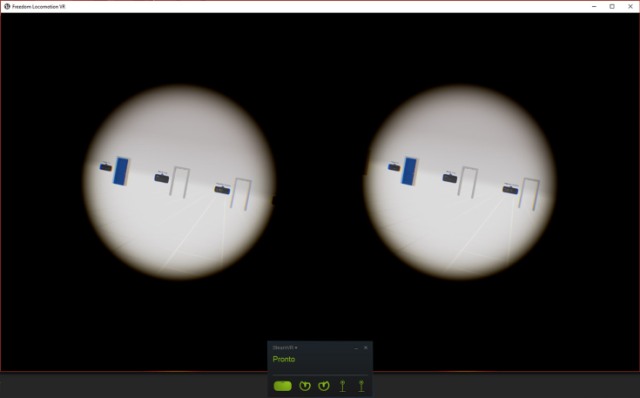
Some problems I noticed:
- Walk in place is anyway a tiresome method of walking. Pressing a key on the keyboard is surely more relaxing. I can’t imagine playing 6 hours a day for some days in a row walking in place all the time;
- Walk-in-place is never exactly “in place”. Since you’ve not a reference system in the real world, you unavoidably finish to walk a bit forward in the real world. In the long term this means re-positioning yourself a lot of times to not cross the Guardian area edges. I know this very well having made some exhibitions with our ImmotionRoom system;
- Dedicing walking direction with a thumbstick requires you to add an artificial action to a natural method and this makes the brain go crazy: a lot of times I found myself walking in place and becoming angry because the character didn’t walk. Only after a while I realized that it was because I hadn’t pushed the direction thumbstick. After a bit of practice this problems diminishes, obviously;
- Dedicing walking direction with a thumbstick means that you can walk in every direction, but if you head a direction and then walk in another one from the one of your basin, your brain goes crazy and triggers motion sickness the same (I mean, if I say with my thumbstick that I want to slide left and in the meanwhile I walk looking forward, the movement is not-natural and so triggers sickness). So, the no-nausea method works only if you’re walking in a direction similar to the one you’re pointing with your body.
Anyway, apart from these problems, I think that this method is a great step towards finding the perfect VR locomotion method.
In the provided demo there are provided two more locomotion types, called Dash-spot and Blink-spot, that are very similar. These methods are some kind of teleported-walking: I mean, every 500ms or such, you make a little teleportation in the direction that is decided by your thumbstick. Teleportation distance is decided by a step-length that is decided by how much you raise your controllers. So, it’s like making little fast jumps, step by step: since there’s no continuous walking, there can’t be motion sickness. These two methods are less natural than thee Freedom Locomotion (whose actual name is CAOTS, but I prefer Freedom Locomotion), but they don’t require you to walk in place, so they’re surely less tiresome. Honestly I found these locomotion systems interesting, but also very very annoying since they’re not natural at all.
About the demo itself: nice, but has too many writings (no one has the willing to read stuff, so I didn’t get lots of things of it) and some annoying interactions (you can even climb the Huge Robot using your controllers and this is cool, but after a while you’ll inevitably fall to the ground because climbing is not perfect and you’ll feel the urge to throw your Touch out of the windows). Cool stuff are trying to suicide yourself, but even for this the author reduces the FOV, so it is reduced not only the sickness, but also the adrenaline of falling. Uff. I liked some elements: the door to be opened; the interaction engine, so you can take cubes with your hands and launch them towards other cubes; the enormous robot that makes everything so Japanese :D.
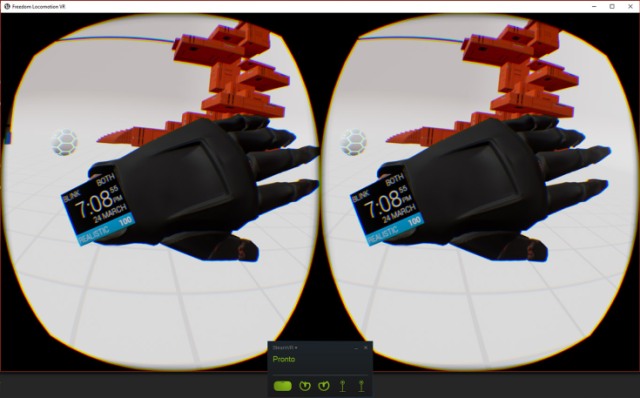
One last thing: if you’re struck in the demo and you don’t know how you can change the settings (like the Locomotion Type, to try all three methods), just press your menu button on your left Touch controller and a super menu will pop-up, making you choose everything.
The final feedback is that Freedom Locomotion System is a really interesting locomotion method and that you all should download its nice demo on Steam to try it out! And don’t forget to download also ImmotionRoom and try it, too! 😉
(Header Image by Huge Robot)
Disclaimer: this blog contains advertisement and affiliate links to sustain itself. If you click on an affiliate link, I'll be very happy because I'll earn a small commission on your purchase. You can find my boring full disclosure here.

